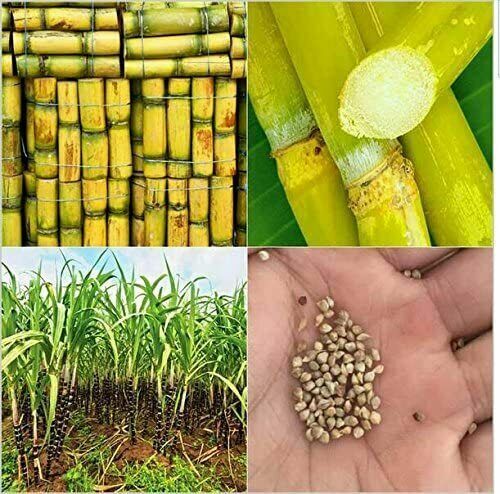Understanding the Vital Methods and Technologies Employed in Modern Cane Sugar Handling
The advancement of walking cane sugar handling has actually been dramatically formed by the assimilation of advanced strategies and innovations that attend to both efficiency and sustainability. Enzyme-assisted removal and innovative refining methods have actually changed return optimization, while automation assists in operational integrity. In addition, the focus on lasting methods reflects a growing recognition of ecological impact. As we explore these important innovations, it comes to be vital to analyze how they not only improve production however additionally line up with broader market patterns and customer needs, increasing inquiries concerning the future of sugar handling and its ramifications for worldwide markets.
Historic Context of Walking Stick Sugar Handling
The historical context of walking cane sugar processing discloses an abundant tapestry of agricultural technology and social exchange that has actually shaped its growth over centuries. The procedure of removing and improving sugar got momentum in India, where approaches for crystallization were perfected around the 6th century.

Advanced Extraction Methods
Efficiency in cane sugar extraction has seen significant improvements, driven by the demand for greater returns and reduced manufacturing prices. This technique not only boosts sugar return but likewise reduces the energy required for processing.
In addition, the fostering of membrane filtration technologies, such as nanofiltration and reverse osmosis, has reinvented the splitting up of sugar from pollutants. These methods enable the discerning permeation of sugar particles while keeping bigger contaminants, simplifying the removal process and decreasing waste.
Moreover, the assimilation of constant removal systems has resulted in boosted operational performance. Cane Sugar Processing. These systems keep a constant flow of cane material, guaranteeing optimal removal conditions and reducing downtime connected with batch handling
Cutting-edge Refining Technologies
Refining techniques in cane sugar processing have undergone a transformative change, driven by the need for higher purity and enhanced product high quality. Among the most significant developments is the adoption of membrane layer purification modern technologies, such as ultrafiltration and nanofiltration. These procedures properly remove contaminations and colorants without the demand for substantial chemical therapies, thereby maintaining the sugar's all-natural flavor and enhancing its charm.
An additional considerable development is making use of ion exchange materials, which enable careful elimination of undesirable ions from sugar remedies. This technology not only raises the overall purity of the final product however additionally contributes to reduced waste and environmental impact.
Furthermore, improvements in adsorption methods, using activated carbon and various other innovative materials, have actually shown reliable in decolorizing sugar solutions while preserving ideal quality. The combination of these innovative refining technologies guarantees that suppliers can produce polished sugar with superior clearness and taste, fulfilling the evolving choices of customers.
Automation and Control Solution
Recent innovations in refining technologies have actually led the way for substantial improvements in automation and control systems within walking stick sugar handling facilities. These systems utilize advanced software and equipment to enhance functional effectiveness, lower human error, and guarantee regular product high quality.
Modern automation integrates different components, consisting of sensors, actuators, and programmable reasoning controllers (PLCs), enabling real-time monitoring visit this website and control of essential procedures. For example, flow, temperature level, and stress rates can be exactly managed during extraction, explanation, and crystallization stages, maximizing performance and lessening waste.
Moreover, progressed data analytics and artificial intelligence formulas play a pivotal role in anticipating upkeep, enabling drivers to prepare for equipment failings before they take place. This proactive approach not just decreases downtime yet likewise extends the lifespan of equipment.
Furthermore, automation facilitates the execution of Sector 4.0 concepts, equipping sugar mills to attain greater connectivity and information exchange throughout procedures. Because of this, decision-making comes to be even more educated and active, eventually enhancing the general competitiveness of cane sugar manufacturing. With these improvements, the industry is well-positioned to fulfill expanding global demands while maintaining operational excellence.
Sustainability Practices in Sugar Manufacturing
Sustainability techniques in sugar manufacturing have ended up being increasingly essential as the industry seeks to stabilize financial stability with ecological responsibility. As consumer recognition expands relating to the environmental pop over to this web-site effects of farming methods, sugar producers are adopting ingenious techniques to lower their ecological impact.
One substantial technique is the implementation of accuracy agriculture techniques, which use data analytics to maximize source use, such as water and fertilizers. This reduces waste and lessens the influence on regional communities. Moreover, many producers are transitioning to renewable energy resources, such as biomass from sugarcane by-products, to power their procedures, consequently lowering dependence on fossil fuels.
Water administration techniques are likewise critical; rain harvesting and efficient irrigation systems assist minimize water shortage issues. Cane Sugar Processing. Furthermore, integrated parasite administration approaches minimize chemical use, promoting biodiversity and dirt health
Corporate social obligation efforts are arising, with companies investing in local areas and making sure fair labor methods. By embracing these sustainability practices, the sugar market not just boosts its online reputation however also contributes to a more sustainable farming landscape, leading the way for future generations.

Conclusion
In summary, contemporary walking stick sugar handling integrates a range of sophisticated strategies and innovations that significantly improve return, sustainability, and efficiency. Collectively, these innovations position the walking cane sugar industry to fulfill modern needs while attending to essential global challenges.
The evolution of walking cane sugar processing has been substantially shaped by the assimilation of innovative methods and innovations that address both effectiveness and sustainability.The historical context of cane sugar handling reveals an abundant tapestry of agricultural advancement and cultural exchange that has formed its development over centuries. Innovations in milling and refining emerged, laying the groundwork click site for modern walking cane sugar processing.Refining techniques in walking cane sugar processing have undergone a transformative change, driven by the demand for greater pureness and enhanced product quality.In recap, modern-day walking cane sugar handling incorporates a variety of advanced techniques and innovations that significantly boost sustainability, efficiency, and return.